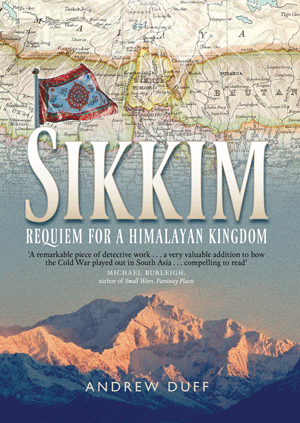There is one more encounter that I want to write about before I leave South Asia. It took place in Calcutta in late March.
One of the things that I have been enjoying while travelling is making fresh, interesting connections. One of these led me to an email correspondence with John Keay, the author of many books including a highly-acclaimed History of India.
John noticed from my blog that I was interested in the prevalence of the English language in India, and suggested that I might like to look up a publisher in Calcutta, Professor Puroshottama Lal. For more than 50 years, Lal has run a publishing house from his home – The Writers Workshop – championing Indian writers in the English language, helping many aspiring writers, including Vikram Seth, get into print.
The professor and a new perspective on Indian English
A round of phone-calls, some fancy footwork and frantic flattery helped to secure an appointment. Despite a warning from Lal’s son of the frailty of his father as he approaches his 80th birthday in August of this year, Lal agreed to see me. Lal still gets a solid stream of aspiring writers contacting him to arrange a meeting – Michael Buckley [author of the recently published ‘An Indian Odyssey‘] had visited the previous day – so I felt relatively privileged to be granted an audience.
Lal is a frail man, tall and gaunt, but with a presence and an energy and charisma that filled the room. His dusty study had not changed from the description I had been given from 30 years previously, with “… the stalagmites of books so finely balanced that a sneeze would have brought them down.” His English is spoken with a slight Indian accent, but is a model of clarity and precision.
I took a seat and stuttered through an explanation of my sudden interest in India, and in particular in the prevalence of the English language across India. I said that I had been told he would have a controversial and interesting view.
Within minutes, Lal had set out his stall, explaining that he believes English to be a very Indian language, possibly the only truly pan-Indian language.
“You see India is this huge mass of inclusiveness – I don’t understand why people think we can’t adopt the English language. We took the Sanskrit language from the outside, the Muslim religion as well. Indians adopt, that’s our special skill…”
When Lal talks about the English language, it is invariably in the context of literature – he has been passionately championing the potential for English to help Indians to express themselves in literature for over 50 years. It was in 1954-5, while a teacher at the Jesuit St Xavier’s College, that he first conceived of the idea of the Writers’ Workshop, to champion Indian writers in English, largely in response to a continuing paternalistic attitude towards Indian writers from the editors of “The Statesman”, a publishing hangover left behind after partition and still run by Englishmen in the 1950s.
Lal’s interest lies in in the usefulness of English in expressing India‘s identity, rather than as some business language. (While acknowledging that English has a unifying role across India as the only language spoken in every state – “I have been seen as controversial for saying that Indian is the only English language…” – he is not really interested in the use of Business English in India). He sees Indian English – in a literary context – as a separate language from British English, one that can express what he sees as India’s “pastoral sophistication”.
“We have to reinvent the language to express our pastoral identity…I mean you lot [the British] were pilferers and looters there is no doubt, but we can take what we want can’t we? You see, British English is firmly rooted in understatement and irony, both of which are totally foreign concepts to the Hindu. I mean, we just can’t understand why you would use phrases such as ‘Not bad…’, and as for saying the absolute opposite of what you mean, we absolutely can’t understand why you would do that! Indian English, by contrast, must be a language of dreams and love, not business. When we dream and make love in English then the language comes alive for us as Indians….”
This concept of “pastoral sophistication” is at the heart of Lal‘s thinking, and the (very different) role that English has in expressing India’s identity. He believes that the nature of India’s sprawling rural inland mass has led to a different basis for society, a pastoral identity that is challenging for outsiders to comprehend, particularly the idea that pastoralism could be in some ways ‘sophisticated”.
I asked him if by pastoral sophistication, he in some ways was contrasting the Indian approach to constructive dialogue – often based on teacher-student relationships based on unquestioning devotion – with the obligation to employ critical analysis that is deep-seated in Western approaches to education and discourse.
“Well yes, I do think that this is a fundamental difference in approach – in the West you have a ‘duty of doubt’; in India, we like to work on the basis of a ‘duty of faith’.”.
For Lal then, it is no surprise that outsiders often see Indian English as hyperbolic and overblown. That is just the way it is. Indian English is a different language, taking away irony and understatement from British English, and creating something sometimes lyrical and yes, sometimes over-the-top.
This concept of a pastorally sophisticated society goes well beyond just language. It strongly echoes the (somewhat controversial and still prevalent) Ghandian belief in the primacy of the village in Indian society. I asked what would happen as India rapidly urbanises. Would India develop an urban sophistication?
“Who knows? At present, we have absolutely no understanding of the nuances of urban sophistication as practised in the cities of the West – instead we are taking what we think is urban sophistication – bars, the high life, money, showing off – and pretending we are urbanly sophisticated! But who knows what will happen? I don’t make history – I just take advantage of an existing situation.”
Reflections on Life, the universe and everything
As the late afternoon drew on, the conversation shifted gear and became more personal. It felt like Lal had things he wanted to tell me.
He started recounting the story of a 1989 trip to a conference in Vancouver, when he had been taken seriously ill, and had ended up at death’s door. “I had so many blood transfusions that I don’t even know if I am a Hindu now, dammit!”
As he spoke, it became clear that this event marked a major transformation point for him.
“You know, as I lay there, I suddenly realised that my life had been wasted. Absolutely wasted. I had learnt nothing. I realised that a person is the composite of the people that he meets in life. You know the word for visitor in Hindi? Ur Ditti. It literally means ’wrong time’. Visitors never come at the right time. How you deal with these visitors is what defines you. I hadn’t really learnt from anyone I had met. So I wrote a book called ‘Lessons‘. About the lessons I had learnt from 25 people I had met.”
For the next half an hour, I sat mesmerised as he told me about the book. The passion Lal now feels for life today became abundantly clear. It was infectious, and at times felt as if the lessons were ones that were meant for me personally.
“Everything is wonderful goddamit! It is you who are losing the wonder! You lost it dammit! Don’t blame others! Remember – we are not made for doubt – we are made for exploration. It‘s better to have faith and be deceived than to doubt and be deceived…”
He started quoting poetry to me – Wordsworth first (from “Ode: Intimations Of Immortality From Recollections Of Early Childhood”):
There was a time when meadow, grove, and stream,
The earth, and every common sight,
To me did seem
Apparelled in celestial light,
The glory and the freshness of a dream.
It is not now as it hath been of yore;–
Turn wheresoe’er I may,
By night or day,
The things which I have seen I now can see no more.
And then Yeats:
When such as I cast out remorse
So great a sweetness flows into the breast
We must laugh and we must sing,
We are blest by everything,
Everything we look upon is blessed.
He paused. “I tried to commit suicide you know. Pulled out my tracheotomy… You must stay open, learn, sift…”
As Saturday afternoon turned into Saturday evening, I became aware that he was getting tired. I took my cue, and left. He had a final surprise for me, telling me that he had learnt from being with me. It was another lesson in humility.
I picked up a copy of the beautifully hand-bound book “Lessons” from the tiny bookshop downstairs, along with the volume of Vikram Seth’s poetry (“Mappings”) that Lal had published when no-one else was interested, both books that I will treasure.
Transcreating the Mahabharata
The following morning I had another opportunity to spend time with Lal. For many years, he held Sunday morning sessions to discuss poetry and literature with leading lights in the Indian literary scene.
 He has maintained this Sunday morning tradition, albeit now in a slightly different format. For 30 years, he has been working on what he calls an English “transcreation” of the 100,000 verse Indian epic the Mahabharata. (The word “transcreation” is a recognition of the fact that he believes this is not translation, but creation into a new “Indian English” language, capable of bringing new light to the epic).
He has maintained this Sunday morning tradition, albeit now in a slightly different format. For 30 years, he has been working on what he calls an English “transcreation” of the 100,000 verse Indian epic the Mahabharata. (The word “transcreation” is a recognition of the fact that he believes this is not translation, but creation into a new “Indian English” language, capable of bringing new light to the epic).
Sunday morning sessions are now dedicated to readings from this effort. I decided to seek him out again for the session in downtown Calcutta.
I arrived slightly late and slipped into a seat near the front, joining about 20 others, most of whom were clearly regulars. Lal was reading from clippings that he had pulled together during the week, pricking the pomposity out of hard-worked journalistic endeavours with rapier thrusts and parries. “Why is it that American writers feel a need to be both learned and hip at the same time. To be both cute and acute? I just don’t understand it…”
The reading itself started. We sat spellbound as he read out passages from Section 50, breaking off occasionally to deliver damning and acerbic analogies to modern-day life, along with comments on the futility of worrying too much.
“This is Obama and the bankers of course. Enough’s enough!” … “They’re all here of course – the politicians, the teachers” … “A mad world it is. So what are you going to do? Get Angry?”
Literary allusions to Eliot’s Wasteland and Ezra Pound’s Cantos peppered the commentary as he switched easily between highlighting the comic brilliance of the epic poem and drawing out the erotic intensity and deep symbolism inherent in some of the original language.
It was a remarkable hour. As it ended, Professor Lal left one final thought.
“You know, in the end, the message of the Mahabharata is really simple. It is ‘Transform yourselves. Go Beyond. Find out your potential.’ That’s all.”
It was a fitting finale to an intriguing and inspiring meeting with a remarkable man.
[You can read more about Professor Lal and his Writer’s Workshop in an article recently published in the Hindu newspaper, available here.]



